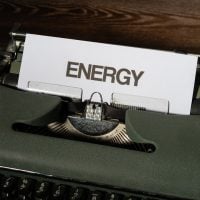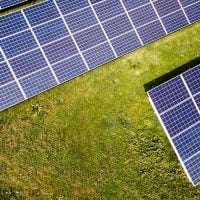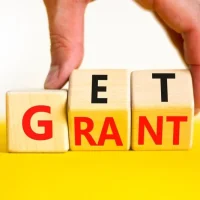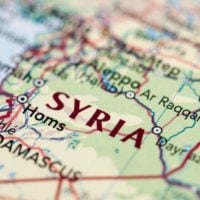In the realm of non-governmental organizations (NGOs), securing funding is often a pivotal step toward implementing impactful projects, particularly in the Water, Sanitation, and Hygiene (WASH) sector. Grant proposal writing serves as a crucial skill for NGOs aiming to address pressing global challenges related to water scarcity, sanitation deficiencies, and hygiene practices. The process of crafting a grant proposal is not merely about filling out forms or meeting deadlines; it is an art that combines storytelling with data-driven insights to persuade potential funders of the project’s significance and feasibility.
WASH projects are essential for improving public health, enhancing educational outcomes, and fostering economic development. However, the competition for funding is fierce, and many organizations vie for the same pool of resources. Therefore, understanding the nuances of grant proposal writing specific to WASH initiatives can significantly enhance an NGO’s chances of success.
This article will delve into the critical components of writing effective grant proposals tailored for WASH projects, providing actionable insights that can help organizations secure the necessary funding to make a difference in communities around the world.
Understanding the Needs and Objectives of the WASH Project
Before embarking on the proposal writing journey, it is imperative to conduct a thorough needs assessment to identify the specific challenges faced by the target community regarding water, sanitation, and hygiene. This involves engaging with local stakeholders, conducting surveys, and analyzing existing data to gain a comprehensive understanding of the issues at hand. By pinpointing the unique needs of the community, NGOs can tailor their proposals to address these challenges directly, thereby increasing their relevance and appeal to potential funders.
Once the needs have been identified, it is essential to articulate clear and measurable objectives for the WASH project. Objectives should be specific, achievable, relevant, and time-bound (SMART). For instance, rather than stating a vague goal such as “improve sanitation,” a more precise objective could be “to construct 50 latrines in rural schools within 12 months.” This clarity not only helps in guiding project implementation but also provides funders with a concrete understanding of what the project aims to achieve.
By aligning project objectives with the identified needs, NGOs can create a compelling case for support that resonates with donors.
Crafting a Compelling Narrative and Project Description
A well-crafted narrative is at the heart of any successful grant proposal. It should weave together the story of the community’s struggles with water, sanitation, and hygiene issues while highlighting the transformative potential of the proposed project. The narrative should evoke empathy and urgency, compelling funders to see the importance of their investment.
This can be achieved by incorporating real-life testimonials from community members or presenting data that illustrates the dire consequences of inadequate WASH facilities. In addition to storytelling, a detailed project description is crucial for outlining how the proposed activities will be implemented. This section should include information on the project’s methodology, timeline, and key personnel involved.
It is important to demonstrate that the organization has a well-thought-out plan that considers potential challenges and risks. For example, if a project involves constructing water supply systems, it should address how maintenance will be managed post-implementation. By providing a comprehensive overview of the project’s execution, NGOs can instill confidence in funders regarding their capacity to deliver results.
Budgeting and Financial Planning for WASH Projects
A transparent and realistic budget is a cornerstone of any grant proposal. It not only reflects the financial requirements of the project but also demonstrates fiscal responsibility and accountability. When developing a budget for a WASH project, it is essential to break down costs into specific categories such as personnel, materials, equipment, training, and monitoring and evaluation.
Each line item should be justified with clear explanations of why these expenses are necessary for achieving project objectives. Moreover, NGOs should consider including both direct and indirect costs in their budget. Direct costs are those that can be directly attributed to the project activities, while indirect costs cover overhead expenses such as administrative support and utilities.
Funders often appreciate transparency in budgeting; therefore, providing a detailed budget narrative that explains each cost can enhance credibility. Additionally, NGOs should explore opportunities for cost-sharing or in-kind contributions from local partners or community members to demonstrate community buy-in and resourcefulness.
Demonstrating Impact and Sustainability in the Proposal
Funders are increasingly interested in understanding not just what a project will achieve but also how its impact will be sustained over time. Therefore, it is vital for NGOs to articulate a clear plan for monitoring and evaluating the project’s outcomes. This includes defining key performance indicators (KPIs) that will measure success and outlining how data will be collected and analyzed throughout the project lifecycle.
For instance, if a project aims to improve access to clean water, KPIs could include the number of households served or reductions in waterborne diseases. Sustainability is another critical aspect that should be woven into the proposal narrative. Funders want assurance that their investment will lead to lasting change rather than temporary fixes.
NGOs can demonstrate sustainability by outlining strategies for community engagement and capacity building. For example, training local residents to manage water supply systems or sanitation facilities can empower communities to take ownership of their resources long after the project concludes. By emphasizing both impact and sustainability, NGOs can present a compelling case that resonates with funders’ long-term goals.
Tips for Submitting a Professional and Polished Grant Proposal
The final step in grant proposal writing is ensuring that the submission is professional and polished. First impressions matter; therefore, it is essential to adhere to formatting guidelines provided by funders meticulously. This includes font size, margins, page limits, and required documents.
A well-organized proposal not only reflects professionalism but also makes it easier for reviewers to navigate through the content. Additionally, proofreading is crucial to eliminate any grammatical errors or typos that could detract from the proposal’s credibility. It may be beneficial to have someone outside of the project team review the proposal for clarity and coherence.
Fresh eyes can catch mistakes that may have been overlooked and provide valuable feedback on how effectively the narrative communicates its message. Finally, consider submitting proposals well ahead of deadlines to avoid last-minute complications. Early submissions allow time for any unforeseen issues that may arise during the submission process.
By following these tips and maintaining a focus on clarity and professionalism throughout the proposal writing process, NGOs can significantly enhance their chances of securing funding for their WASH projects. In conclusion, grant proposal writing for WASH projects requires a strategic approach that encompasses understanding community needs, crafting compelling narratives, budgeting effectively, demonstrating impact and sustainability, and submitting polished proposals. By mastering these elements, NGOs can position themselves as credible candidates for funding opportunities that will enable them to make meaningful contributions toward improving water, sanitation, and hygiene conditions in communities worldwide.









































